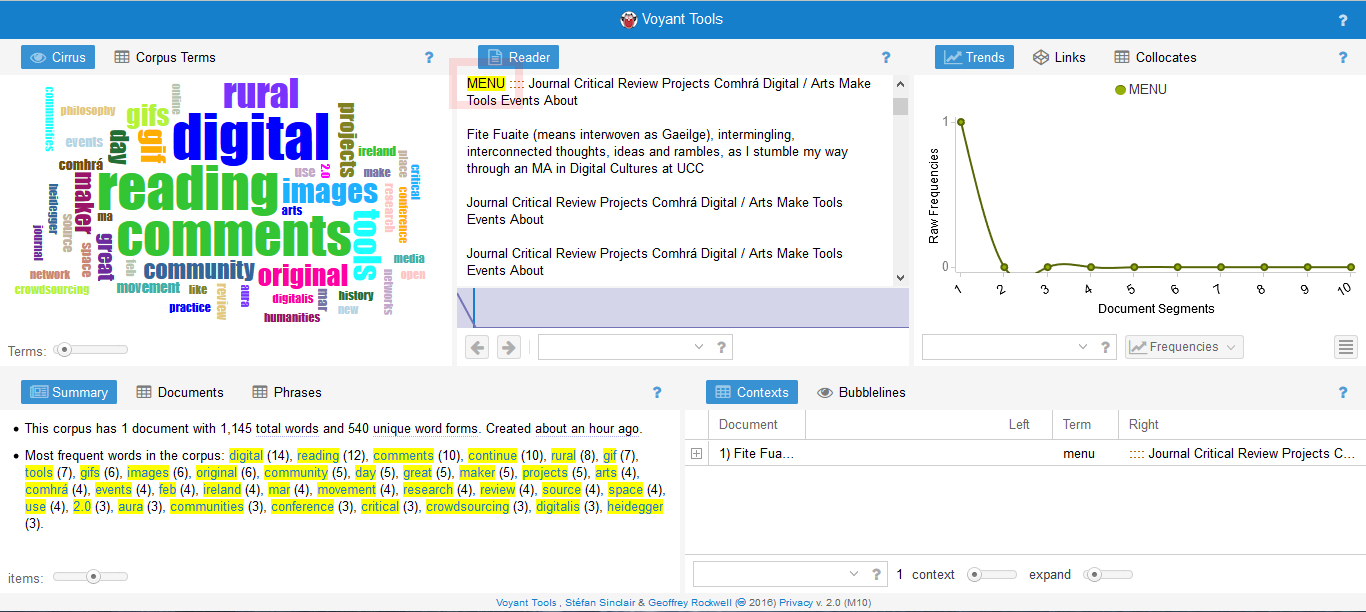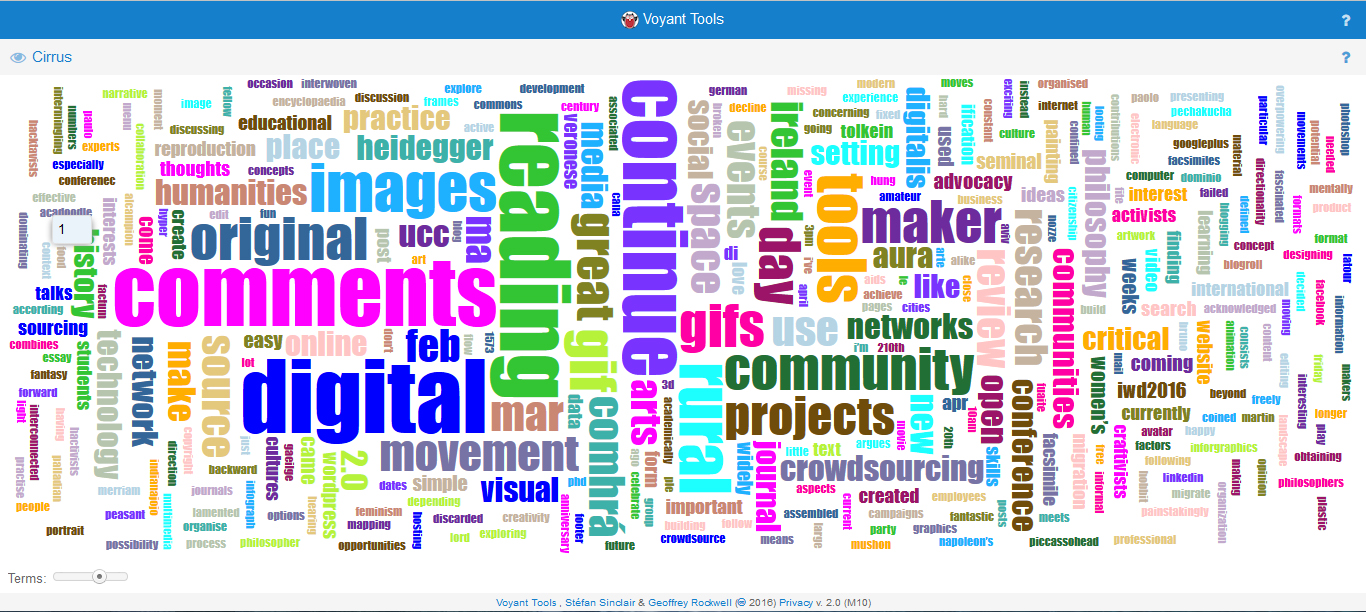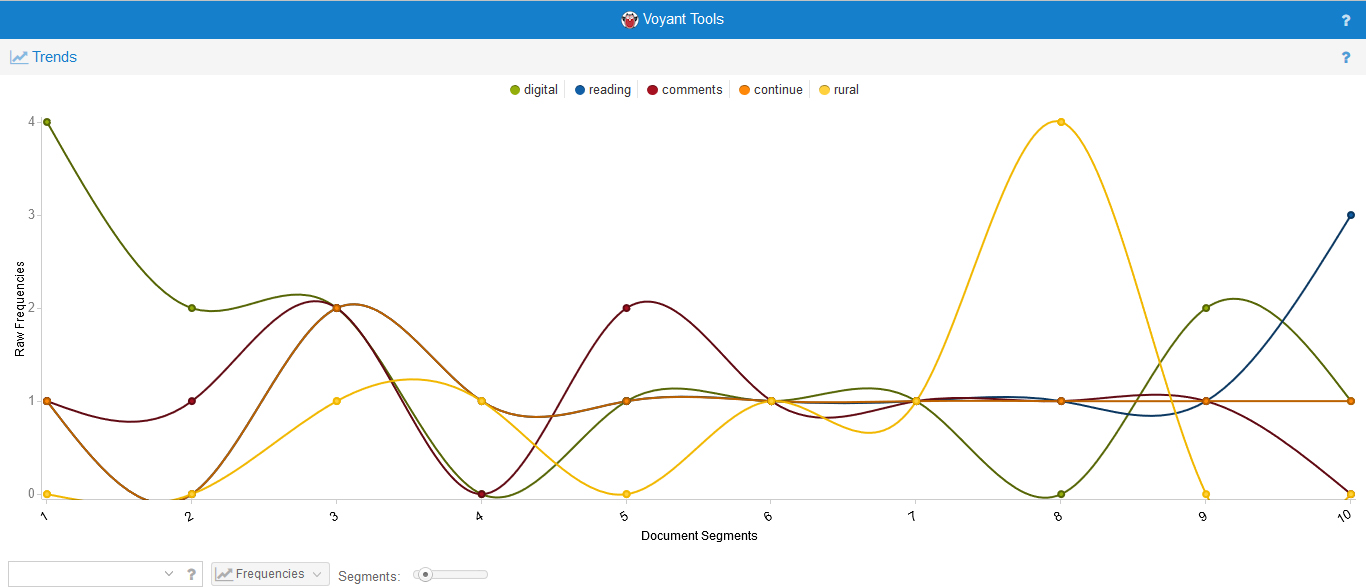Voyant is scholarly project focused on interpreting of texts and design of tools in the humanities. You too can use Voyant to analyze your own texts, to write essays with embedded hermeneutical panels generated by Voyant, and you can adapt the code to create your own versions of tool. (Voyant-Tools)
Voyant Tools, is one of a number of web-based text analysis software. It has several uses, within research. It can be used to study texts, found in Literature or on the Web. Text analysis, using computer assistance, makes qualitative research faster and easier by highlighting important words and terms, creating visualizations in the form of word clouds, mindmaps etc.
…automated text analysis is a tool for discovery and measurement in textual data of prevalent attitudes, concepts, or events. 1
I had used word clouds before, simply as a visual, not as a form of analytical research. To explore text analysis, as, a Humanities tool, I decided to use Voyant Tools, to explore the text in my own website. I’ve become aware, that although I might be thinking certain ideas, and along certain thought trains, I don’t always express myself as such. By using text analysis on myself, I can determine the impact and clarity of my writing, begin to see patterns of language that I use. A critical self-analysis that may improve my writing skills.
Voyant Tools, is extremely easy to use. simply copy and paste or upload your text, or simply, as I did, write in the url address. The following images is what will appear on your screen:
A series of text-analysis in the form of visualisations, which you can open and explore in more detail. I opened each section and then took a screenshot.
Firstly, a word cloud:
This allows me to analysis my own text. The Word Cloud makes it immediately visible to see word frequency: the most used words appear bigger, such as digital, original, community, project, maker, etc. I can reject certain words that I know frequent each post, as part of the make up of the post, such as comments, continue, reading. These are words, embedded into each post automatically. Space, communities, rural, networks, tools. Yes, these are the areas I am interested in. This is reiterated in the following diagram, which shows you in more precise terms, the amount of words in the corpus and the word frequency
Below is a diagram, using another tool on the Voyant website. A trend graph, containing the 5 most common occurring words, and their interaction.
It will be very interesting to compare this text analysis, to another taken in 4 months time. Will the word frequencies be the same or different? After using Voyant Tools, in this way, it has given me more insight, into how it can be used. I will be using it as part of my research for my dissertation. It will be very interesting to analysis the text of surveys I will collect. To see the key words and points that are important to participants of my research.
References:
- O’Connor, B., Bamman, D., & Smith, N. A. [2011]. Computational text analysis for social science: Model complexity and assumptions. In Proc. of the NIPS Workshop on Computational Social Science and the Wisdom of Crowds.






So, what do you think ?